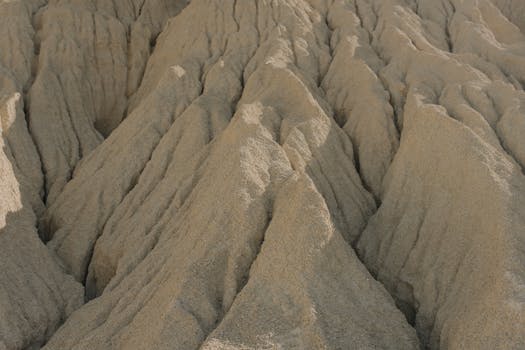
**
Drought-Smart Gardening: Planting Strategies for a Parched Summer
The relentless grip of drought across many regions is forcing gardeners to rethink their planting strategies. Water conservation is no longer a suggestion, but a necessity. This year, surviving a parched summer means embracing drought-tolerant plants and employing savvy gardening techniques. This guide provides expert advice and practical tips to help you cultivate a thriving garden even during extended periods of dry weather. From selecting the right drought-resistant plants to implementing efficient watering systems, we'll equip you with the knowledge to navigate this challenging season successfully.
Understanding Drought Conditions and Their Impact on Plants
Before diving into specific planting choices, it's crucial to understand how drought impacts your garden. Prolonged periods without sufficient rainfall lead to:
- Wilting and stunted growth: Plants struggle to access the water needed for essential functions.
- Reduced flowering and fruiting: Drought stress affects reproductive processes, resulting in fewer blooms and a diminished harvest.
- Increased susceptibility to pests and diseases: Stressed plants are more vulnerable to attacks from insects and fungal pathogens.
- Soil erosion: Lack of moisture weakens the soil structure, making it more susceptible to erosion.
Understanding these effects helps you choose the right approach for your specific climate and soil type. Knowing your USDA Plant Hardiness Zone is also vital, as this indicates the average minimum winter temperature in your region, guiding you toward plants that are resilient to the local climate, including drought conditions.
Choosing Drought-Tolerant Plants: Your Secret Weapon Against Drought
The cornerstone of drought-resistant gardening lies in selecting plants naturally equipped to withstand dry spells. These plants possess adaptations that minimize water loss and maximize water uptake. When choosing plants for your drought-stricken garden, consider the following:
- Native plants: Prioritize plants native to your region. They've evolved to thrive in your local climate and soil conditions, including typical rainfall patterns. Searching for "native drought-tolerant plants [your state/region]" will yield excellent results.
- Xeriscaping plants: Xeriscaping is a landscaping approach that emphasizes water conservation. It involves selecting and arranging plants that require minimal irrigation. Popular xeriscaping plants often include succulents, lavender, and various types of grasses.
- Deep-rooted plants: Plants with deep root systems access water sources deeper in the soil, making them better equipped to survive droughts than shallow-rooted plants.
- Plants with small leaves: Smaller leaves reduce surface area, thus minimizing water loss through transpiration.
- Succulents and cacti: These plants are masters of water storage, making them incredibly resilient to drought.
Smart Watering Techniques for a Parched Landscape
Even with drought-tolerant plants, efficient watering is essential. Avoid common watering mistakes that can hinder your garden's success:
- Avoid frequent shallow watering: This encourages shallow root systems, making plants more susceptible to drought stress. Deep, infrequent watering encourages deeper root growth.
- Water deeply and less often: Aim for soaking the soil thoroughly, allowing the water to penetrate deep into the root zone.
- Water early in the morning: This minimizes water loss due to evaporation.
- Utilize drip irrigation or soaker hoses: These methods deliver water directly to the roots, reducing water waste.
- Mulch your garden beds: Mulching helps retain soil moisture, suppressing weeds, and moderating soil temperature.
Mulching: Your Best Friend in Drought Conditions
Mulching is a crucial technique for water conservation in drought conditions. A layer of organic mulch, such as wood chips or straw, helps retain soil moisture by reducing evaporation. It also suppresses weed growth, reducing competition for water resources and creating a more stable soil environment.
Soil Preparation: The Foundation for Drought Resistance
Preparing the soil properly is critical for helping your plants survive. This involves:
- Improving soil structure: Healthy soil with good drainage and aeration is essential for root development and water retention. Amend heavy clay soils with organic matter like compost to improve drainage and aeration.
- Adding organic matter: Incorporating compost or other organic materials improves soil water retention and provides nutrients.
Monitoring Your Plants and Responding to Drought Stress
Regularly monitor your plants for signs of drought stress, such as wilting, leaf discoloration, or reduced growth. Adjust your watering schedule as needed, providing supplemental irrigation when necessary. Remember that the intensity of your drought-tolerant gardening will depend on the severity of the drought in your region.
Conclusion: Embracing the Challenge of Drought-Resistant Gardening
Gardening during a drought presents challenges, but with careful planning and the right strategies, you can still cultivate a vibrant and healthy garden. By selecting drought-tolerant plants, employing efficient watering techniques, and preparing the soil appropriately, you can ensure your garden thrives even during extended periods of dry weather. Remember to embrace sustainable practices and choose wisely, ensuring your garden's survival and resilience in the face of drought. Start planning your drought-smart garden today!




















